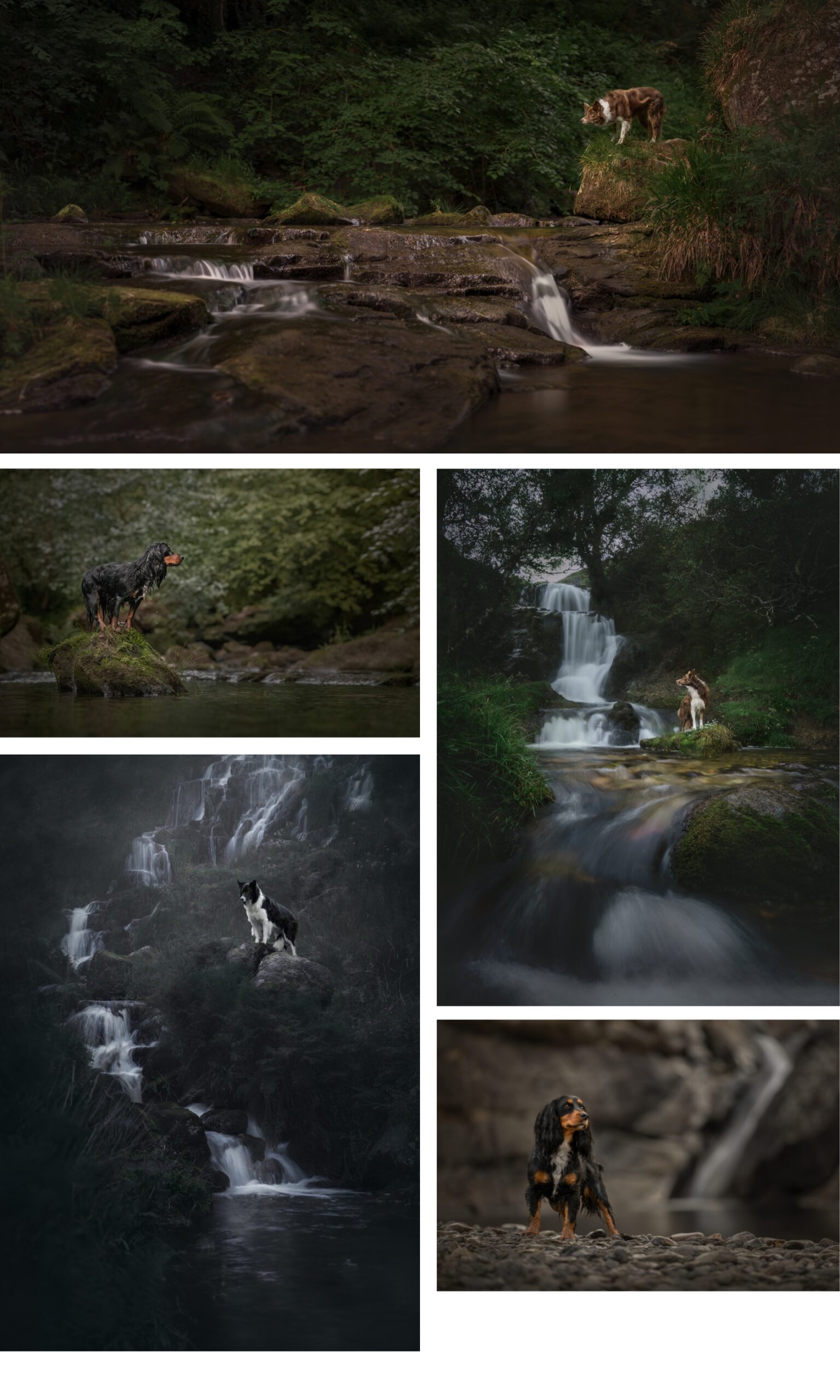Dog photography around water always carries risks, but photographing dogs around waterfalls is often a magic moment for most photographers who specialise in pets, so we ought to cover it here. We have already discussed waterfalls in Sh!t Hot Shots, the online course, but aside from in there, I’ve not actually talked that much about it.
That’s partly because I have an intense and largely illogical fear of water. Rivers, lakes, streams, canals and definitely waterfalls are all on my “absolutely not” list but in the past 2 years, I’ve been working really hard on overcoming this fear. As of today’s date, I can now just about go ankle-deep in slow or still water that I can see through to the bottom – that is a monumental improvement on this time last year. So yeah, I have an issue, and yep, I’m working on it!
This entire video wouldn’t exist without the amazing team at K&F Concept kindly providing our community with a 10% discount on all the products mentioned here. This post does contain a few affiliate links, but as always I only ever recommend products that I would use and trust on the daily to get the job done!
To get 10% off any product linked in this post, simply use the code thattogspot before the end of December 2023
Here is the video on this topic:
5 tips for waterfall dog photography:
1. Safety First for Dogs & Warterfalls
Whenever you pair water with animals, there is risk involved. If that water is moving, the risk increases. If it’s a waterfall, you’re upping the ante further still. If the area is rocky, there are even more things to consider. As a general rule when working around water, rocks and falls with dogs, keep them on lead and under control.
My dogs are usually off lead when in the shooting positions, because they are incredibly well trained. However, often getting to and from that specific area involves leash time where we can make sure they’re not going to slip or break a leg on slippy rocks, or jump into water that they don’t know.
Around bigger falls, the noise is often scary for most dogs, so usually we never go near the base. However, if you do because you have a confident dog, under the main waterfall is a high-velocity area where any waste upstream will settle. Metal, rocks and lots of other things may be underneath the foaming water, and so we usually keep dogs well away from this area.
Keep everyone safe, including you. Do not do anything to add danger to your photoshoots.
2. Photograph the Dogs Around the Area
The “obvious shot” is often used and is usually nice for your photo library but boring in general. A sit with the waterfall behind is rarely epic, so use the entire area to shoot. The most beautiful situations can often happen around the falls or lakes, where you’d probably not expect it.
Try use interesting shapes and angles to capture the location and the subject in their element. My favourite places tend to be around big rocks, I like the monotone scapes they create as well as the angular shapes with our collies.
3. Use a Polarizing Filter
This is really a game changer. For dog photography around water, or simply waterfall dog photography, you should have a circular polarizing filter (CPL) on hand. These filters go on the front of your lens and twist to remove polarized light – light reflected from surfaces such as rocks, water, metal and glass.
My favourite CPL is the magnetic one from K&F Concept because the image quality remains perfectly clear and they snap on and off with ease.
Here is an example of what a polarizing filter can do around waterfalls:
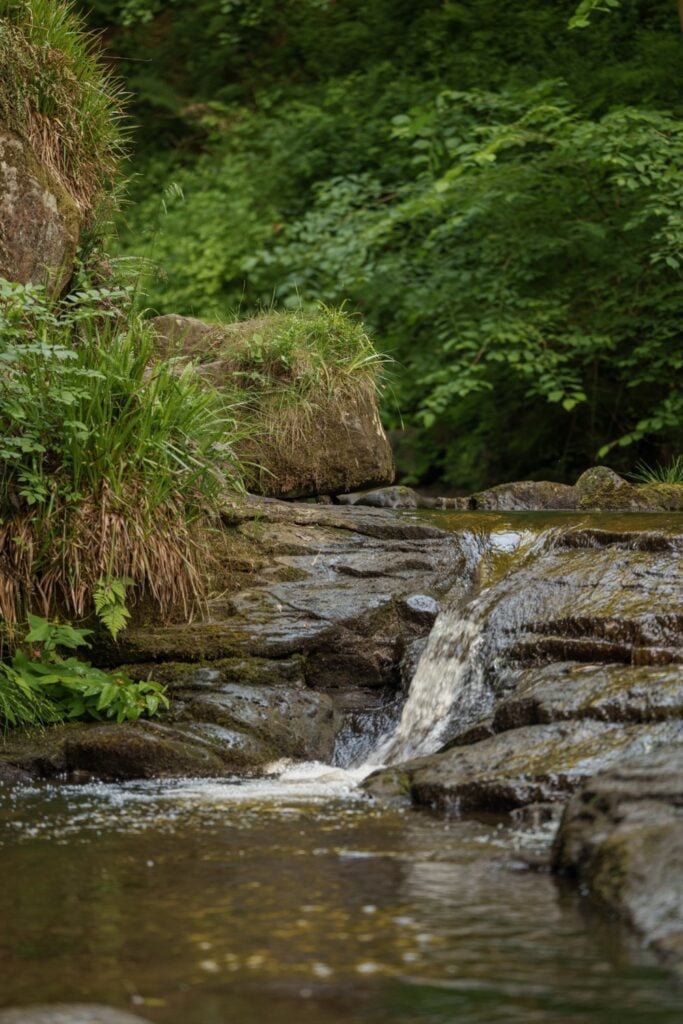
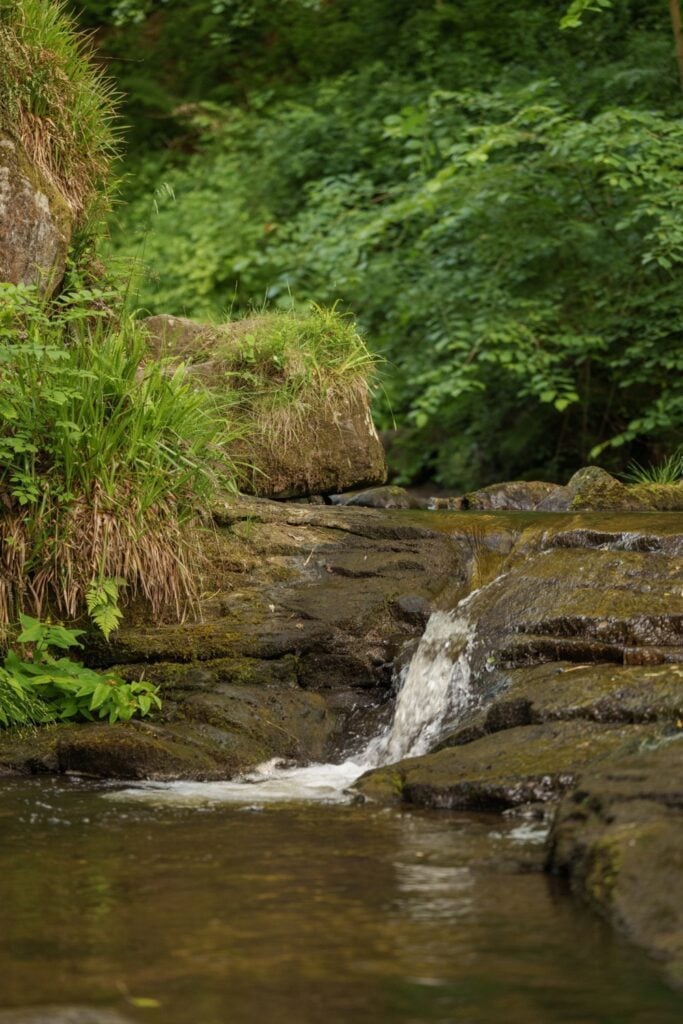
4. Use a Tripod for Silky Water
If you want to get that silky water look on waterfalls, you’ll need a tripod to be able to hold the camera perfectly still for multiple seconds at a time. Keeping it in the family of items here, I’ve been using the K&F Concept Carbon Fibre Travel Tripod recently because it’s light and small enough for me to take with multiple dogs on hikes.
For top tripod selection criteria, I look for maximum weight it can hold because I have heavy kit, easy to adjust legs (ideally twist ones) and the ability for the camera to go underslung, or upside down. The last criteria there is really important because I like to be able to put my camera close to the ground at times.
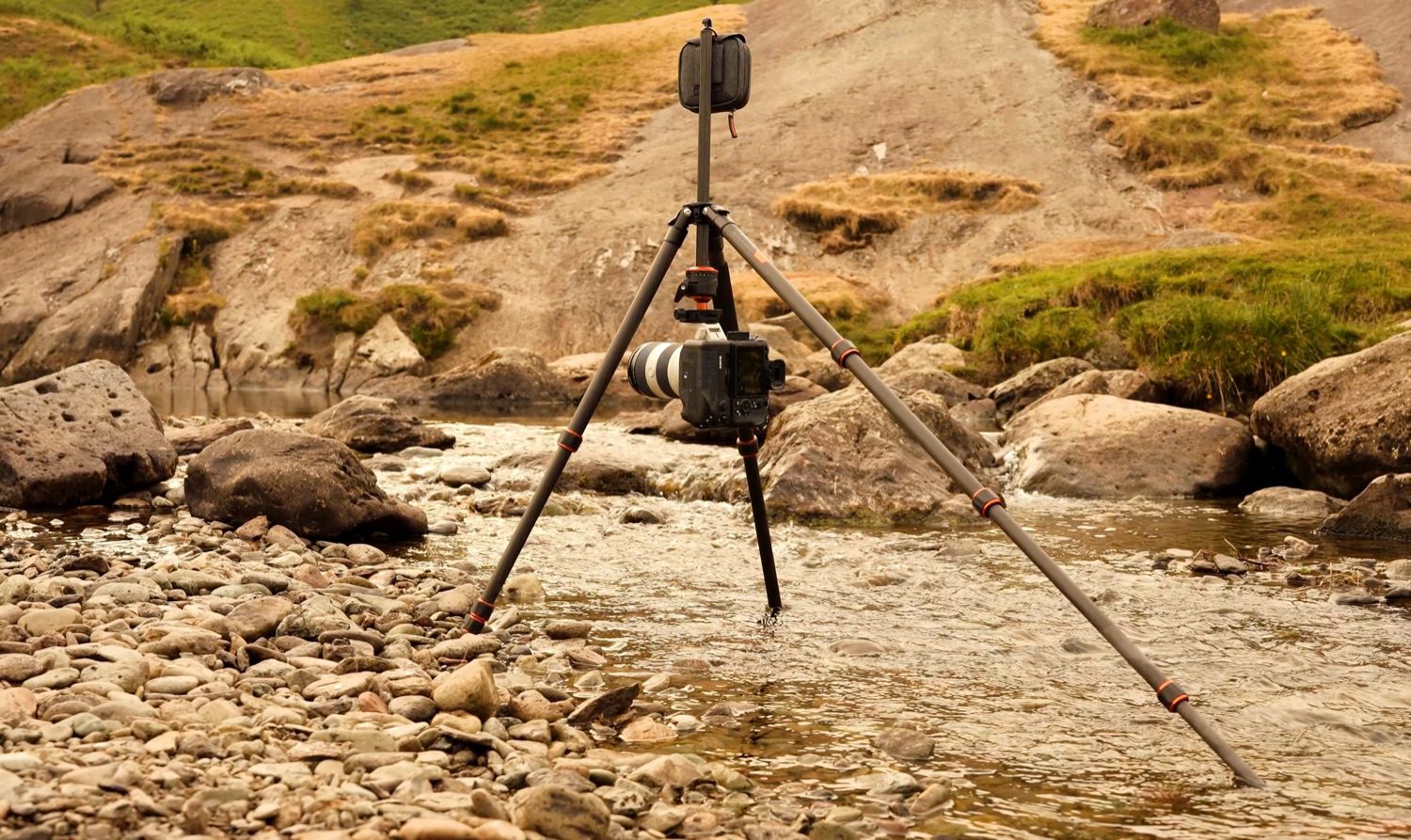
And of course, the tripod linked above does all of that!
5. Use ND Filters for Long Exposures
Again for that silky water, you’ll be capturing the water moving for multiple seconds at a time and therefore you often will have issues keeping your exposure down low enough to protect the highlights. That’s where Neutral Density filters, or ND filters, come in. An ND filter acts like sunglasses for your lens, and they come in different strengths.
I much prefer to be able to quickly add ND filters because there are usually dogs waiting, so magnetic ones are a surefire hit, and I like to have options, so my preference is for a set of different strengths to use as needed. This set of ND filters from K&F Concept come in a little pouch and they’re magnetic for fast switches to run your silky shots.
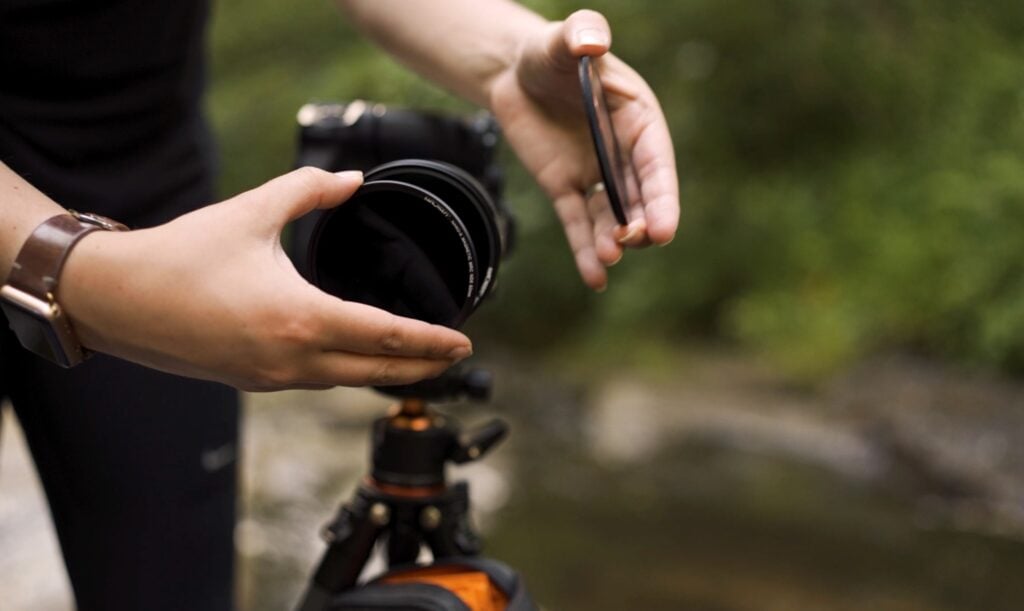
You’ll then need to lower your shutter speed to at least 4 seconds to be able to capture the silky water. Make sure you check your final photos in camera because the white parts of moving water can be really bright, you might need to drop your exposure slightly to re-take the shots.
With all those tips put together, there’s nothing stopping you from creating some epic water and waterfall shots with your dogs!
__
